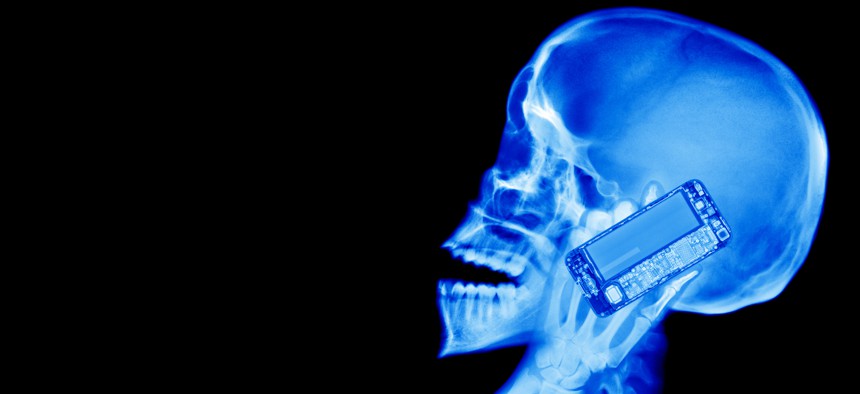
artist rendering Peter Dazeley / GETTY
New AI Can Detect Emotion With Radio Waves
There are national security and privacy implications to an experimental UK neural network that deciphers how people respond to emotional stimuli.
Picture: military interrogators are talking to a local man they suspect of helping to emplace roadside bombs. The man denies it, even as they show him photos of his purported accomplices. But an antenna in the interrogation room is detecting the man's heartbeat as he looks at the pictures. The data is fed to an AI, which concludes that his emotions do not match his words...
A UK research team is using radio waves to pick up subtle changes in heart rhythm and then, using an advanced AI called a neural network, understand what those signals mean — in other words, what the subject is feeling. It’s a breakthrough that one day might help, say, human-intelligence analysts in Afghanistan figure out who represents an insider threat.
The paper from a team out of Queen Mary University of London and published in the online journal PLOS ONE, demonstrates how to apply a neural network to decipher emotions gathered with transmitting radio antenna. A neural network functions in a manner somewhat similar to a human brain, with cells creating links to other cells in patterns that create memory, as opposed to more conventional methods such as machine learning, which employ straightforward statistical methods on data sets.
The team, led by Yang Hao, dean for research at the faculty of science and engineering, used a small transmitting antenna to bounce radio waves off subjects. They used the signals to put together a database of different heart rhythms as those subjects watched emotionally-charged videos that elicited relaxation, fright, disgust and joy. The team also connected the subjects to an electrocardiogram to make sure that the signals that the antenna were picking up were correct. The team ran their data through the deep neural network and found that their system accurately classified the subjects’ emotional state 71 percent of the time.
That’s better than the high-60s achieved by a similar experiment that used machine-learning methods, and avoids the significant work of preparing a data set with minute features (also called feature extraction). Also, neural networks do much better with datasets that are highly time-dependent, like radio waves, as opposed to machine learning algorithms, he said.
The breakthrough is intended to help health and wellness professionals better understand the emotional states of patients. “As for its implications to...national security, more research needs to be done, just like other issues concerning ethics and responsible use of this technology,” Hao told Defense One in an email.
The proliferation of new advances in AI, coupled with new sensors, will add to difficult discussions about privacy in the years ahead. There is no law in the United States against passive data collection of cardiac rhythms with antenna just as there is no law prohibiting the photographing of faces in public. There was no need for such regulation...until now.
NEXT STORY: US Army Europe Wants New Hub for Artillery Fire
